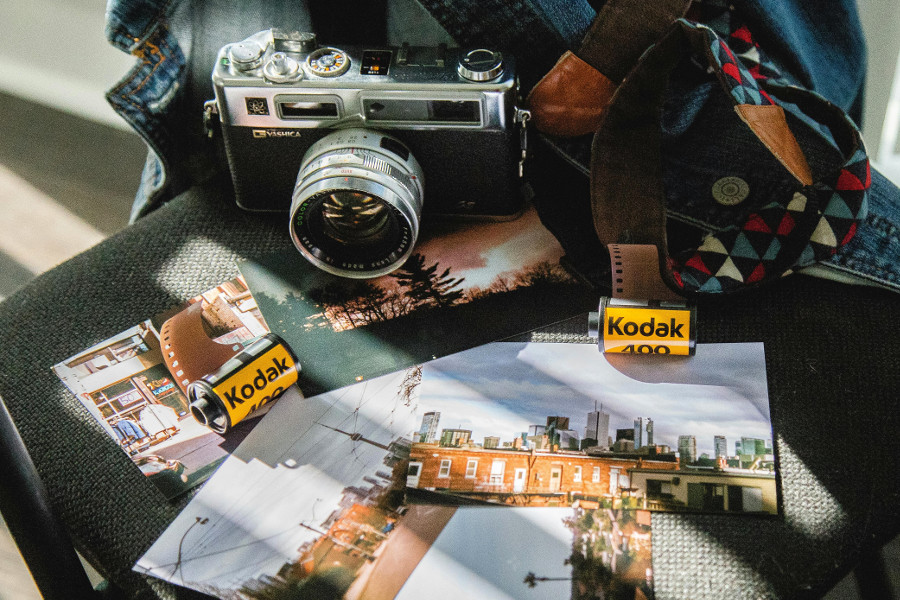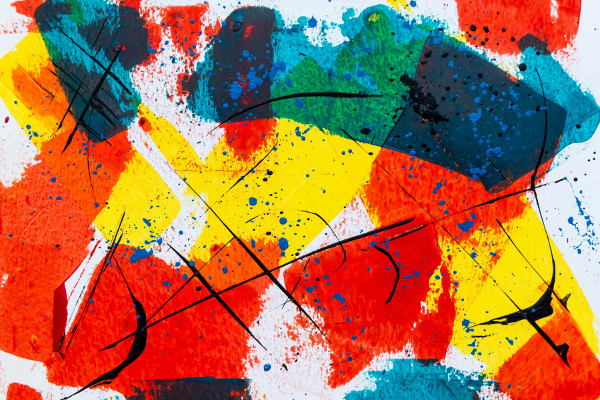How to Enter and Succeed in Art, Photo, Video, and Writing Competitions: A Comprehensive Guide
Entering a creative competition isn’t just about showing off your work - it’s an opportunity to step up and share your talent with the world. Whether you’re an artist, photographer, writer, or videographer, these competitions are more than just a chance to win a prize. They offer a platform to gain recognition, connect with others, and, most importantly, push yourself to become better at your craft.

We live in an age where competition is everywhere. It’s easy to feel like your work might get lost in the noise. But this is exactly why creative competitions are so important. They provide a space for your unique vision to stand out, where your voice - whether in visual art, photography, writing, or video - can be heard and appreciated. In this guide, we'll break down how you can enter these competitions, prepare your best work, and give yourself the best shot at success.
Understanding the Competition
Before you even think about entering, you need to understand what you’re getting into. Creative competitions aren’t just about impressing the judges; they’re about understanding the value and the opportunity they present.
Why Enter Competitions?
- Career Growth: Winning (or even just being noticed) can open doors. It’s not just about a trophy or a check. It's about credibility, exposure, and the connections that come with it.
- Exposure: Being part of a competition means your work will be seen by a broader audience. You might find new fans, collaborators, or even mentors along the way.
- Personal Fulfillment: Competitions are also about challenging yourself, growing as an artist, and gaining the confidence that comes from putting your work out there.
Types of Creative Competitions
These competitions come in many shapes and sizes. Depending on your medium, you’ll encounter a variety of opportunities:
- Art Competitions: Whether it's traditional painting, digital work, or something in between, art competitions offer a chance to showcase your creative vision.
- Photography Competitions: These range from portrait and landscape to thematic contests. They offer a space for both emerging and established photographers to share their work.
- Video Competitions: From short films to documentaries, video competitions focus on visual storytelling and technical prowess.
- Writing Competitions: Whether you’re submitting poetry, short stories, or essays, writing contests give you the chance to convey your ideas and engage with readers.
Criteria to Look For in a Competition
Each competition will have its own rules, so make sure you carefully read the guidelines. Look out for things like themes, submission formats, eligibility requirements, and the judging process. This will help you choose the right contest for your work and set yourself up for success.

Preparing Your Work for Submission
So, you’ve found a competition you’re excited about. Now, it’s time to prepare your work. This is the part where attention to detail matters, and where taking the time to perfect your piece can make all the difference.
Researching the Competition
Take some time to research the competition you’re entering. Understand what kind of work has been successful in the past, what the judges are looking for, and whether your piece fits the vibe of the contest. You can even look at past winners to get a sense of what works.
Fine-Tuning Your Creative Piece
Whether you’re creating a painting, writing an essay, capturing a photograph, or editing a video, your work needs to be polished.
- For Art: Don’t rush the finishing touches. Ensure that your piece is well-detailed and speaks to the theme, while staying true to your personal style.
- For Photography: Be mindful of the technical aspects - composition, lighting, and focus. But also think about the message your photo conveys, and whether it tells a story.
- For Video: Ensure your video flows well and has solid production quality. Consider things like pacing, audio quality, and the overall emotional impact.
- For Writing: After finishing your draft, go back and edit. Remove unnecessary words, tighten the narrative, and make sure your submission reads smoothly and effectively.
Tailoring Your Work to the Competition Theme
Most competitions will have a theme or a prompt. The challenge is to find a way to incorporate the theme into your work while still keeping your unique voice intact. It’s about balance - staying true to yourself, while ensuring your submission is relevant to the competition.
Seeking Feedback
Before hitting “submit,” get some feedback. Ask fellow creatives or mentors to review your work. Fresh eyes can often catch things you missed, whether it’s a typo or a visual inconsistency.

Navigating the Submission Process
Now that your piece is ready, it’s time to focus on the logistics. This is where many creatives fall short - because the submission process is often more technical than you might think.
Understand Submission Guidelines
It may seem simple, but following the submission guidelines is crucial. Pay attention to things like file formats, submission portals, and even word count. Don’t risk disqualification by missing these details.
Crafting an Attention-Grabbing Title/Description
If your competition requires a title or description, make it count. Your description is your chance to give context to your work and showcase what inspired you. The right title and description can set your submission apart.
Double-Check Details
Before you submit, make sure everything is in order - your contact details, bio, and any additional required documents (like CVs or artist statements). It’s easy to overlook this part, but getting it right shows professionalism.
Entry Fees and Legal Considerations
Some competitions have entry fees, and others might require you to grant certain rights to your work. Be sure to read the terms carefully. Know where your work will be used, and understand how it might affect your rights.
Maximizing Your Chances of Winning
While no one can guarantee victory, there are steps you can take to improve your chances. It’s about presenting your best work and staying true to what makes you unique.
Research the Judges
If you know who the judges are, take the time to learn about their preferences and past work. Understanding their tastes can give you insight into what they’re likely to appreciate. But don’t feel pressured to mold your work to fit their style - authenticity is what truly resonates.
Showcase Originality and Passion
Judges see hundreds of submissions, so make sure yours stands out. Be bold, be original, and most importantly, let your passion shine through. People are drawn to work that feels authentic and speaks to them on a deeper level.
Staying Authentic vs. Trend Chasing
It can be tempting to follow trends, but at the end of the day, it’s your unique voice that will set you apart. Stick to your own style and ideas. That’s what makes your work interesting.
Emotional Connection
If your work can make an emotional impact, it’s much more likely to stand out. Whether it’s through your words, visuals, or sound, creating something that touches people is a powerful way to capture attention.
Presentation
The way you present your work matters. Make sure it’s polished, professional, and aligned with the competition’s format. A well-presented piece shows that you care about your work - and it can make a big difference in how it’s received.

Dealing with Rejection
Not every submission will win. But that doesn’t mean you’ve failed. Rejection is just a part of the process, and it’s all about how you handle it.
Embrace the Learning Opportunity
Rejection can be hard, but it’s also a chance to grow. Use any feedback you receive to improve your next submission. Every rejection is a stepping stone toward success.
Stay Resilient
Every successful artist or writer has faced rejection at some point. The key is to keep going. Stay focused on your craft, and remember that persistence is often the key to success.
Keep Entering Competitions
The more you enter, the better you get. Every competition, whether you win or lose, is a chance to refine your skills and expand your network. Keep submitting, keep creating, and keep growing.
After the Competition
Once you’ve submitted your work, the journey doesn’t stop. Here’s how to make the most of the post-submission phase.
What Happens After You Submit
You’ll likely have to wait for the results, but that doesn’t mean you should stop creating. Use this time to work on your next project, or consider submitting to other competitions.
Celebrate Your Work
No matter the outcome, getting your work out there is a win in itself. Share your submission with your followers, talk about it with others, and take pride in what you’ve created.
Using the Experience for Future Growth
Each competition is a learning experience. Take the lessons you’ve learned and apply them to your next submission. The more you enter, the more you’ll learn about yourself and your craft.
A couple of websites that list competitions:
- ArtShow (art competitions, contests, juried exhibitions)
- Intercompetition (international competitions for art, writing, photo & film)
- Luxembourg Art Prize
- Reedsy (writing contests)
Conclusion
Creative competitions are more than just a chance to win - they’re an opportunity to grow, gain recognition, and share your work with a wider audience. By understanding the competition, preparing your submission, and presenting your work thoughtfully, you can maximize your chances of success. And if you don’t win? Keep going. Every experience brings you closer to your goals.
So, whether you’re an artist, photographer, writer, or filmmaker, take the leap and enter that competition. Your unique work is worth sharing with the world. Good luck, and make your creative mark!



